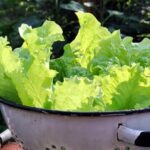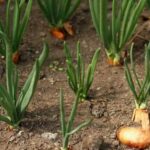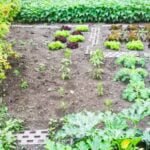When it comes to successful vegetable gardening, the quality of the soil is paramount. Without nutrient-rich and well-structured soil, plants struggle to thrive and produce bountiful harvests. That’s where composting comes in. Composting is an age-old practice that involves the decomposition of organic waste materials to create a nutrient-dense fertilizer for plants. In this article, we will explore one particular type of compost – seafood compost – and its effectiveness in enriching soil specifically for vegetable gardens.
So, what exactly is seafood compost? It is a specially formulated compost made from discarded seafood, such as fish bones, shells, heads, and other parts that would typically end up in landfills.
These waste products are collected and processed into a dark, earthy material that offers numerous benefits to your vegetable garden. Seafood compost not only provides vital nutrients but also improves the structure of the soil, promotes optimal moisture retention, enhances drainage and aeration – factors essential for healthy plant growth.
Seafood compost is rich in nutrients that are crucial for supporting the growth and development of vegetable plants. It contains high levels of nitrogen, phosphorus, potassium, calcium, magnesium, and trace minerals like zinc and copper.
These elements play vital roles in various physiological processes within plants – from enhancing root development and leaf formation to improving flower production and fruit quality. By incorporating seafood compost into your vegetable gardens’ soil enrichment routine, you can ensure that your plants have access to these essential nutrients throughout their life cycle.
What is Seafood Compost?
Seafood compost is a type of organic fertilizer that is derived from the remains or byproducts of seafood. It is created through a process called composting, which involves the decomposition of organic materials into nutrient-rich soil amendments. Seafood compost is made by combining leftover seafood such as fish, shells, and crustaceans with other organic matter, such as plant waste or manure.
Seafood compost offers several benefits and unique characteristics that make it a valuable addition to vegetable gardens. Firstly, it provides an abundant source of essential nutrients for plants. Seafood byproducts are rich in nitrogen, phosphorus, potassium, and micronutrients like calcium and magnesium, which are vital for healthy plant growth and development. These nutrients help improve the overall fertility of the soil and enhance the productivity and quality of vegetables.
In addition to its nutritional benefits, seafood compost also significantly contributes to improving soil structure. The decomposition process breaks down the organic matter into fine particles that help loosen compacted soils and improve drainage. This improves water infiltration and prevents waterlogging, which can be detrimental to vegetable plants.
Furthermore, seafood compost promotes better aeration in the soil, allowing roots to access oxygen more easily. The enhanced moisture retention properties of seafood compost benefit vegetable gardens in regions with dry climates or during periods of drought.
Table: Nutritional Benefits of Seafood Compost
| Nutrient | Significance |
|---|---|
| Nitrogen (N) | Essential for leafy growth and vibrant green color |
| Phosphorus (P) | Promotes root development and bud formation |
| Potassium (K) | Improves overall plant health, disease resistance, and fruit quality |
| Calcium (Ca) and Magnesium (Mg) | Supports cell wall development and prevents nutrient deficiencies |
Nutritional Benefits of Seafood Compost for Vegetable Gardens
Seafood compost offers numerous nutritional benefits for vegetable gardens, making it an excellent choice for enriching soil fertility. This organic matter is a rich source of essential nutrients that are vital for the growth and yield of vegetable plants.
One of the key benefits of seafood compost is its high nutrient content. As seafood waste breaks down, it releases valuable nutrients such as nitrogen, phosphorus, and potassium into the soil. These nutrients are essential for plant growth, as nitrogen promotes leafy growth, phosphorus enhances root development, and potassium improves overall plant health and disease resistance.
In addition to these primary nutrients, seafood compost also contains secondary macronutrients like calcium and magnesium, which contribute to strong cell development and photosynthesis in plants. Micronutrients such as iron, zinc, and manganese are also present in seafood compost, supporting various metabolic processes in vegetables.
The presence of these key nutrients in seafood compost contributes to improved soil fertility and ensures that vegetable plants have access to a balanced supply of essential elements throughout their growing cycle. This leads to healthier plants with increased vigor, stronger root systems, and higher yields.
Furthermore, using seafood compost as a nutrient source reduces the need for synthetic fertilizers while providing a more sustainable and organic approach to gardening. By incorporating this natural fertilizer into your vegetable garden’s soil, you can create a nutrient-rich environment that nurtures healthy plant growth while reducing chemical inputs.
Overall, the nutritional benefits of seafood compost make it an excellent choice for vegetable gardens. Its rich nutrient content supports robust plant growth and yield while promoting sustainable gardening practices. Incorporating seafood compost into your gardening routine can provide your vegetables with the essential elements they need for optimal health and productivity.
Improving Soil Structure with Seafood Compost
Seafood compost not only provides essential nutrients for vegetable plants but also plays a crucial role in improving soil structure. The quality of soil structure is vital for successful vegetable gardening as it affects drainage, aeration, and moisture retention in the garden bed.
One of the primary benefits of using seafood compost is its ability to enhance soil drainage. Poor drainage can lead to waterlogged soil, which deprives plant roots of oxygen and can cause root rot. Seafood compost, with its organic matter content, helps to improve drainage by loosening compacted soil particles. This allows excess water to flow through the soil more efficiently, preventing waterlogging and ensuring healthier root systems for vegetable plants.
In addition to improving drainage, seafood compost also aids in enhancing soil aeration. Proper air circulation is essential for healthy root growth and overall plant development. The organic matter in seafood compost helps create pore spaces within the soil that allow oxygen to penetrate into the root zone. Adequate oxygen levels promote robust root development and increase nutrient uptake, leading to healthier and more productive vegetable plants.
Furthermore, seafood compost contributes to better moisture retention in the soil. It acts as a sponge by absorbing and retaining water while also reducing evaporation from the surface of the garden bed. This helps maintain consistent moisture levels throughout the soil profile, reducing the need for frequent watering and ensuring that vegetable plants have access to an adequate water supply even during dry periods.
To maximize the benefits of seafood compost on improving soil structure in vegetable gardens, it is important to apply it correctly. Firstly, remove any debris or large shells from the seafood compost before incorporating it into your garden bed. Spread a layer of seafood compost evenly over the topsoil and gently work it into the existing soil using a garden fork or tiller. Aim for a depth of around 4-6 inches to ensure optimum integration with the native soil.
It’s worth noting that seafood compost is known to have a unique aroma due to its marine-based ingredients. Some gardeners may find the smell unpleasant, but with proper application and mixing into the soil, any odor should dissipate relatively quickly. Additionally, if you or anyone in your household has seafood allergies, it’s important to take necessary precautions and avoid direct contact with the compost.
When using seafood compost as a soil amendment, remember the importance of moderation. It is recommended to apply a 1-2 inch layer of compost annually or as needed during each growing season. Over-application can potentially lead to imbalances in nutrient levels or pH levels in the soil.
pH Balance and Seafood Compost
Maintaining the proper pH balance is essential for the health and productivity of vegetable gardens. The pH level, which measures the acidity or alkalinity of the soil, affects nutrient availability to plants. One of the advantages of using seafood compost in vegetable gardens is its ability to help maintain an optimal pH level.
Seafood compost typically has a neutral to slightly acidic pH, which is beneficial for most vegetables that prefer slightly acidic soil conditions. This is particularly advantageous for crops such as tomatoes, peppers, potatoes, and beans that thrive in a pH range of 6.0 to 7.0. When you incorporate seafood compost into your garden soil, it can help regulate the pH levels, ensuring it stays within this ideal range.
Another benefit of seafood compost in maintaining pH balance is its ability to buffer and stabilize soil acidity or alkalinity over time. By nature, seafood compost has properties that can counteract extreme swings in pH levels caused by factors like excessive rainfall or oversaturation with fertilizers. This ensures that your vegetable plants have a stable environment to grow and absorb nutrients efficiently.
It’s important to note that while seafood compost can help adjust soil pH towards neutrality if it’s too acidic or alkaline, it should not be relied upon as a sole solution for drastic pH imbalances in your garden soil. If you’re dealing with severe acidity or alkalinity issues, it’s recommended to conduct a soil test and follow the recommendations provided by agricultural experts or extension services.
Using Seafood Compost as Mulch
Advantages of Using Seafood Compost as Mulch
Using seafood compost as mulch in vegetable gardens offers several advantages that can contribute to the overall health and productivity of the plants.
Firstly, seafood compost acts as a natural weed suppressor when applied as mulch. The thick layer of compost creates a barrier that inhibits weed growth by preventing sunlight from reaching the weed seeds. This reduces the competition for resources between weeds and vegetable plants, allowing the vegetables to thrive without having to compete for nutrients, water, and sunlight.
Secondly, seafood compost mulch helps conserve moisture in the soil. The layer of compost acts as an insulating cover that minimizes evaporation and prevents water loss from the soil surface. This is especially beneficial during hot summer months or in regions with dry climates where water scarcity may be a concern. Conserving moisture not only ensures adequate hydration for the vegetable plants but also encourages deep root growth, making them more resilient to drought conditions.
Lastly, using seafood compost as mulch provides a protective shield for plant roots. As it decomposes over time, the compost releases essential nutrients into the soil which are then absorbed by the plant roots. This gradual release ensures a steady supply of nutrients to support healthy growth and development. Additionally, the decomposing mulch creates a favorable environment for beneficial microorganisms and earthworms that further enhance soil fertility.
Application Tips for Seafood Compost Mulching
To effectively use seafood compost as mulch in vegetable gardens, there are some important considerations and steps to follow:
- Ensure proper preparation: Before applying seafood compost as mulch, remove any existing weeds or grass from the area to prevent their regrowth.
- Apply an adequate depth: Spread a layer of seafood compost mulch approximately 2-4 inches thick around your vegetable plants. Be careful not to pile it up too close to the plant stems, as this can create a humid environment that facilitates disease development.
- Avoid direct contact with stems: Make sure to leave a small gap between the compost mulch and the base of the vegetable plants’ stems to prevent excessive moisture accumulation and potential rotting.
- Monitor moisture levels: While seafood compost mulch helps conserve moisture, it is important to monitor soil moisture regularly and water accordingly. The mulch should be moist but not saturated.
- Reapply as needed: As the mulch decomposes over time, replenish it by adding fresh layers of seafood compost. This will ensure a continuous supply of nutrients for your vegetable plants.
- Prevent odor issues: In instances where seafood compost may emit an odor during decomposition, consider covering the compost with a layer of straw or leaves to reduce any unpleasant smells.
By following these guidelines, you can harness the benefits of using seafood compost as mulch in your vegetable gardens, promoting optimal plant growth and maximizing yield potential.
Seafood Compost Application and Considerations
Seafood compost application in vegetable gardens requires careful consideration and attention to detail. Follow these step-by-step guidelines to ensure successful use of seafood compost:
- Prepare the soil: Before applying seafood compost, prepare the soil by removing weeds, rocks, and debris. Loosen the soil to allow for easy incorporation of the compost.
- Determine the appropriate amount: The recommended application rate for seafood compost is 1-2 inches deep. Calculate the quantity based on the size of your vegetable garden and its specific needs.
- Incorporate evenly: Spread the seafood compost evenly over the vegetable garden, ensuring that all areas receive an equal amount. Use a rake or shovel to incorporate it into the top few inches of soil.
- Avoid direct contact with plant stems: Keep a distance between the seafood compost and plant stems to prevent potential burning or damage to the plants. Create a small gap around each plant when applying the compost.
- Water thoroughly: After applying seafood compost, water your vegetable garden thoroughly to help settle it into the soil and activate its nutrients. Aim for deep watering to encourage roots to grow deeper into the enriched soil.
While using seafood compost can greatly benefit vegetable gardens, there are some considerations to keep in mind:
- Odor concerns: Seafood compost can have a strong odor due to its marine components. Consider choosing a well-ventilated area for application and avoid any sensitive areas like patios or windows.
- Seafood allergies: Individuals with seafood allergies should be cautious when handling or being near seafood compost as it may trigger allergic reactions.
- Freshness and decomposition: Ensure that your seafood compost is well-decomposed before application. Fresh or improperly decomposed compost may contain pathogens or attract unwanted pests.
By following these guidelines and considering important factors, you can successfully apply seafood compost in your vegetable garden and reap its numerous benefits for healthy plant growth and abundant yields.
Best Practices and Tips for Using Seafood Compost in Vegetable Gardens
Dosage Guidelines
When using seafood compost in vegetable gardens, it is important to find the right dosage for optimal results. As a general rule of thumb, apply approximately 1-2 inches of compost to the top layer of soil. This will provide enough nutrients without overwhelming the plants. However, it is crucial to conduct a soil test before applying seafood compost to determine the specific needs of your garden. The test results will guide you in adjusting the dosage accordingly.
Frequency of Application
The frequency of applying seafood compost depends on various factors such as soil quality, plant type, and climate. In general, it is recommended to add compost annually during the spring or fall season. Splitting the dosage into multiple applications throughout the growing season can also be beneficial for providing a steady supply of nutrients to the plants. However, avoid over-application as excessive amounts of seafood compost can lead to nutrient imbalances or water retention issues.
Composting Techniques
To ensure successful integration of seafood compost into your vegetable garden, it is essential to pay attention to proper composting techniques. Before usage, make sure that the compost has fully decomposed and turned into a rich black or brown material with an earthy smell.
If any odors or visible traces of shellfish remain, let the pile continue decomposing until these are no longer present. Additionally, consider incorporating other organic materials such as yard waste or kitchen scraps into your compost pile to create a well-balanced mixture.
Protective Measures
While seafood compost offers numerous benefits for vegetable gardens, it is important to address potential concerns or considerations. Some individuals may have allergies to shellfish or are more sensitive to certain odors associated with seafood products.
If you or anyone in your household has these limitations, take precautions such as wearing gloves and masks during application or considering alternative types of compost. It is also advisable to consult with a local gardening expert or extension service to ensure you are using seafood compost safely and effectively.
By following these best practices and tips, you can maximize the benefits of seafood compost in your vegetable garden. Remember to adjust the dosage based on soil test results, apply the compost at appropriate intervals, and utilize proper composting techniques. With careful application and consideration, seafood compost can help you cultivate healthy and productive vegetable plants throughout the growing season.
Case Studies or Testimonials
Seafood compost has gained popularity among vegetable gardeners for its numerous benefits and unique characteristics. In this section, we will explore real-life experiences and success stories of gardeners who have used seafood compost in their vegetable gardens. These case studies and testimonials provide valuable insights into the effectiveness of seafood compost and its impact on plant growth and yield.
One such success story comes from Sarah, a vegetable gardener in coastal Maine. Sarah had struggled with low soil fertility in her garden for years until she discovered the benefits of seafood compost. She started incorporating seafood compost into her soil preparation routine, and the results were remarkable.
Not only did her vegetable plants grow healthier and stronger, but they also yielded abundant harvests throughout the season. Sarah attributes this success to the rich source of essential nutrients found in seafood compost, which provided her plants with the nourishment they needed to thrive.
Another gardener, John, from the Pacific Northwest region, faced challenges with his garden’s soil structure. The heavy clay soil would often become compacted, leading to poor drainage and root suffocation. However, after adding seafood compost to his garden beds annually for several years, John noticed a significant improvement in the soil structure.
The organic matter in the compost helped break up the clay particles and improved soil porosity, allowing water to drain more efficiently and roots to access oxygen easily. As a result, John’s vegetable plants grew deeper roots and exhibited healthier overall growth.
These case studies highlight the transformative effects of seafood compost on vegetable gardens. The rich source of essential nutrients found in seafood compost provides plants with the necessary elements for optimal growth and yield. Furthermore, its positive impact on soil structure can improve drainage, aeration, and moisture retention in vegetable gardens.
| Case Study | Location | Results |
|---|---|---|
| Sarah’s Garden | Coastal Maine | Abundant harvests, healthier plants |
| John’s Garden | Pacific Northwest | Improved soil structure, deeper roots |
Conclusion
In conclusion, seafood compost is indeed a valuable addition to vegetable gardens. Throughout this article, we have explored the various benefits and characteristics of seafood compost, as well as its impact on soil structure, pH balance, and plant growth. From the rich source of essential nutrients it provides to its advantages as a mulch, seafood compost offers numerous advantages for vegetable gardeners.
One of the key reasons why seafood compost is beneficial for vegetable gardens is its ability to improve soil fertility. As discussed earlier, seafood compost contains a range of essential nutrients that are crucial for healthy plant growth and high yields. These nutrients include nitrogen, phosphorus, potassium, calcium, and micronutrients like magnesium and iron. By incorporating seafood compost into the soil, gardeners can ensure that their vegetable plants have access to these vital nutrients throughout their growth cycle.
Moreover, seafood compost also enhances soil structure by improving drainage, aeration, and moisture retention in vegetable gardens. It helps create a loose and crumbly texture that allows water and air to penetrate the soil more effectively. This is particularly important for root development and overall plant health. Additionally, by using seafood compost as mulch, gardeners can further benefit from its weed control properties while conserving moisture and protecting plant roots.
Overall, based on the information presented in this article, it is clear that seafood compost is indeed good for vegetable gardens. Its nutritional benefits, positive impact on soil structure, pH balancing effects, and usefulness as mulch make it an invaluable resource for gardeners looking to optimize their vegetable plants’ growth and productivity.
When used following best practices and guidelines provided by experts or experienced gardeners cited in case studies and testimonials shared in this article – including considerations such as odor or allergies – seafood compost can significantly contribute to the success of any vegetable garden.
Frequently Asked Questions
Is shrimp compost good for vegetable gardens?
Shrimp compost can be a beneficial addition to vegetable gardens. It is rich in important nutrients like nitrogen, phosphorus, and potassium, which are essential for the healthy growth of plants. Additionally, shrimp compost contains organic matter that improves soil structure and helps retain moisture.
These factors contribute to better soil fertility, increased yields, and healthier vegetable plants. However, it’s important to note that every garden is different, so one should consider factors such as the existing soil composition and the specific nutrient needs of their vegetables before incorporating shrimp compost into their gardening practices.
What is the best compost for vegetable gardens?
When it comes to choosing the best compost for vegetable gardens, there isn’t a one-size-fits-all answer. Different types of compost can offer various advantages based on individual garden needs. Generally speaking, high-quality compost that consists of a blend of organic materials is recommended for vegetable gardens.
This could include a mixture of kitchen scraps, yard waste like grass clippings and leaves, and even animal manure (as long as it has been properly composted). The key factors to consider when selecting compost are nutrient content (such as nitrogen levels), organic matter content, and pH balance. Conducting a soil test can help determine specific nutrient deficiencies or imbalances that may guide you towards selecting the best compost for your vegetable garden.
Is shrimp compost good for tomato plants?
Tomato plants can benefit from the use of shrimp compost in their growth and development. Tomatoes have specific nutrient requirements that differ from other vegetables; they particularly benefit from higher amounts of phosphorus compared to nitrogen. Shrimp compost tends to be relatively high in phosphorus content while providing sufficient levels of nitrogen as well.
Furthermore, shrimp compost enriches the soil by improving its structure and encouraging microbial activity. With enhanced soil fertility and proper pH balance provided by shrimp compost, tomato plants are more likely to thrive by producing more vibrant foliage, healthier root systems, an abundance of flowers leading to sturdy fruit formation – overall resulting in improved yields of high-quality tomatoes. However, as with any compost, it is important to assess the specific needs of the tomato plants and adjust the use of shrimp compost accordingly.

If you’re looking to get into vegetable gardening, or are just looking for some tips on how to make your current garden better, then you’ve come to the right place! My name is Ethel and I have been gardening for years. In this blog, I’m going to share with you some of my best tips on how to create a successful vegetable garden.





